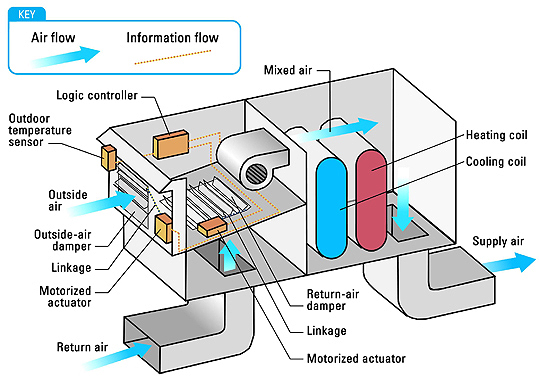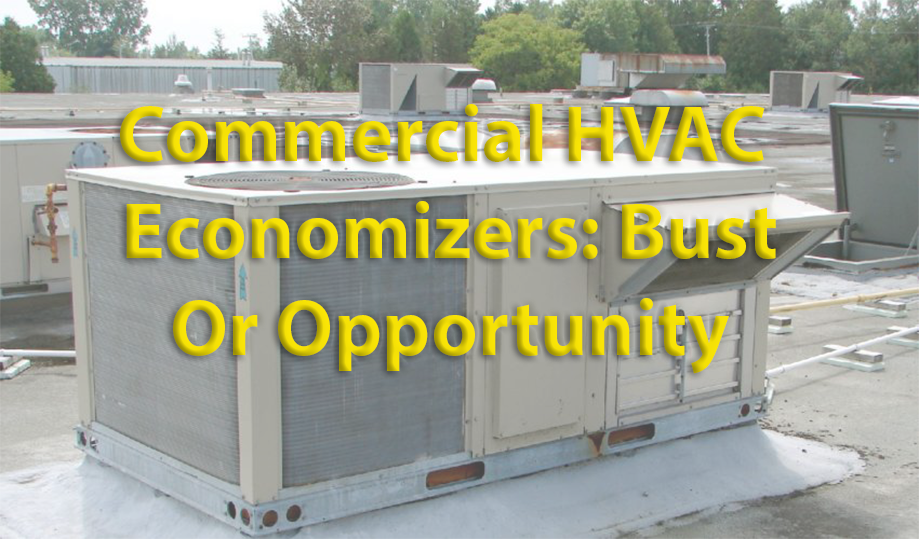
One of the least understood parts of commercial HVAC , a part that many customers have no idea is even there, is the economizer. An economizer plays an important role in helping keep costs low when providing environmental control for a commercial building.
An economizer is part of rooftop package units ‘ the most common type of HVAC system for businesses. It permits the unit to use outdoor air to help with cooling ‘ as long as the indoor air is cool enough, and the humidity levels are already balanced. Essentially, if it isn’t too hot inside your building, the economizer allows the refrigerant-based air conditioning system to take a break while the outdoor air does most of the work.
The building won’t have to expend extra electricity to power the compressor in the rooftop air conditioning system. This helps to extend air conditioner equipment life since the compressor will suffer much less stress.
Aside from helping to lower costs by relieving the cooling equipment of some of its job, an economizer is a way to enjoy better ventilation in a building and improve indoor air quality. Modern commercial buildings often have poor ventilation, which allows for chemicals and VOCs (Volatile Organic Compounds) to build up and affect health and comfort.
Economizers can be designed to help detect carbon monoxide and open up to remove it.

California Versus the World
Obviously, economizers can set the stage for building owners to have much healthier, safer, and environmentally sound indoor environments. This is something that caught the attention of the State of California a long time ago and led to the enactment of the California Energy Commission (CEC) Title 24, Part 6 Code of Regulations.
This code calls for mandatory use of economizers on all commercial and light commercial buildings in the state and it also impacts the residential marketplace. Today, nearly every commercial building throughout the state has an economizer built into its rooftop systems.
But there is very little oversight in how economizers are incorporated or even how they are maintained. The good intent falls to the wayside when 70 to 80% of those already installed don’t actually work properly.
Doomed from the Start
The sad fact is, even though economizers are mandated by Title 24, there is little enforcement. Equipment manufacturers will include economizers when they ship equipment, but the economizers are not built-in. In fact, most economizers are manufactured by third parties.
They are usually shipped with the equipment as an accessory in a separate box. Very rarely do they come fully assembled. The chances of them being installed correctly in the field ‘ even on brand new equipment ‘ is less than 50%.
Add to that the apathy many contractors and building owners have toward this equipment because so many economizers just don’t work. When you try to explain to customers the need to either repair or replace them, per the law, they just shrug their shoulders.
With California requiring economizers, many manufacturers look for third party firms to build and provide them at the lowest price point possible. I’ve found that for a packaged rooftop system under five tons in size, economizers are mostly made of plastic. They may last a year or two at best, then begin to fail.
Click below to go to the next page:













Recent Comments